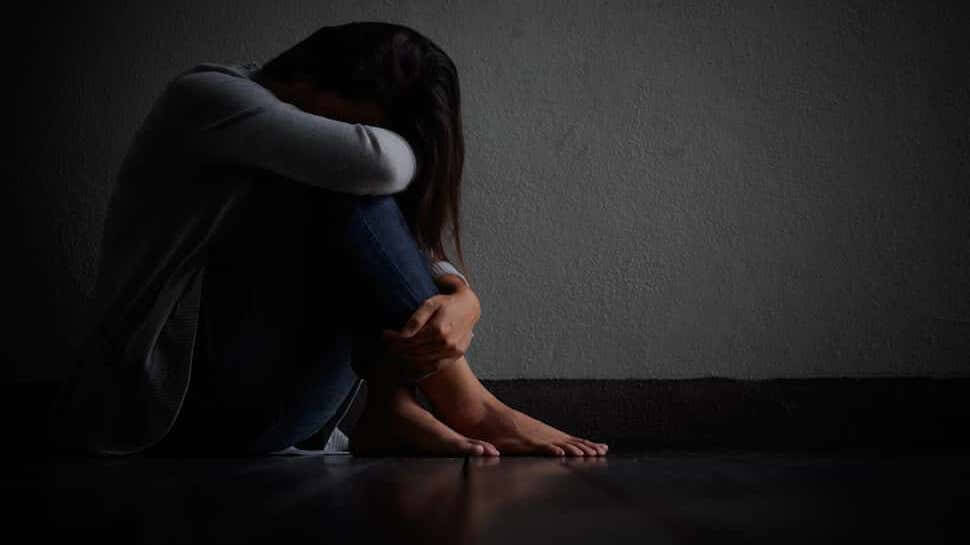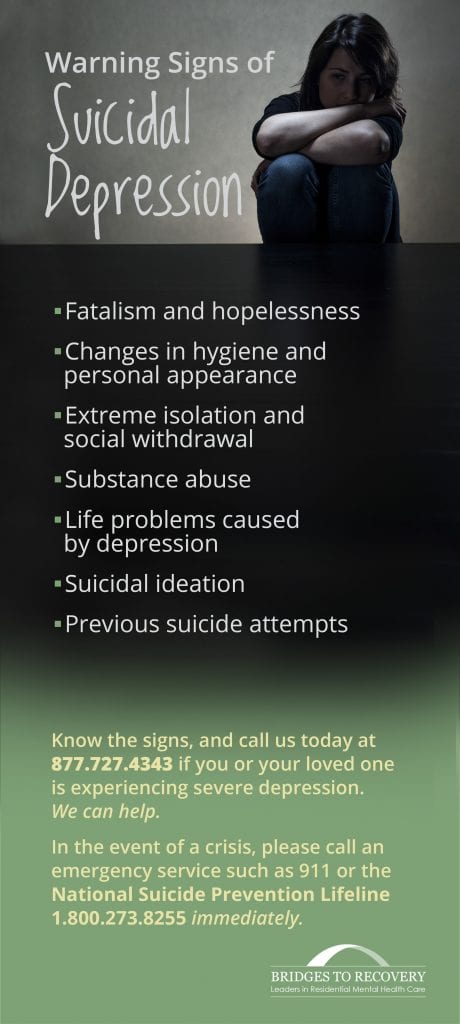
Depression and Suicide: Knowing How to Get Help
Most people who attempt suicide have a mental health disorder that makes them vulnerable to desperate, impulsive acts, and depression is by far the most common condition these unfortunate men and women experience. Suicide is the ultimate cry for help, and suicidal thoughts are a sign that mental health treatment is desperately needed. Fortunately, treatment for suicidal depression is effective in most cases, and emotional crises that put a person at risk for suicide can be defused when counseling is provided in a timely manner.
In the 2016 National Survey on Drug Use and Health, rates of major depression in the United States were measured at 6.7 percent, which represents 16.2 million people over the age of 18. The majority of these individuals (64 percent) suffered severe impairment, and it is men and women who experience this level of despair who are most at risk for suicide.
For people going through mental health issues, trained professional assistance can make a profound impact on their lives. Depression—even of the severe kind—is a highly treatable condition, and 70-80 percent of those who receive treatment will respond positively to that intervention. Suicide is a worst-case outcome, but it is entirely avoidable if action is taken when signs of major depression first become evident.
Suicidal Depression: When Depression Becomes Severe
Suicides have been increasing in recent years, in tandem with rising rates of depression. In 2016, nearly 45,000 Americans took their own lives, and studies have revealed that approximately 50 percent of people who commit suicide will suffer from major depression.
It can be difficult to tell when depression turns suicidal. However, there are certain signs or behaviors associated with depression that may indicate an increased risk for suicidal behavior.
Those signs include:
- Fatalism and hopelessness. Most people who experience the symptoms of depression will express a desire to get help. But if they seem resigned or relentlessly pessimistic, or dismiss the possibility of asking for help, their despondency may have reached a critical stage that makes them vulnerable to suicidal thoughts or impulses.
- Changes in hygiene and personal appearance. As lethargy and apathy deepen during bouts of depression, a person may seem to lose all interest in cleanliness or personal appearance. At this point the effort required to maintain proper levels of self-care may be impossible to muster, and people who reach this discouraging stage of depression may begin to entertain suicidal thoughts.
- Extreme isolation and social withdrawal. The withering of connections with loved ones can feed into a person’s sense of hopelessness, yet it may be inevitable if depression is left uncontrolled for too long. Having caring companions close by can be a source of inspiration for men and women in crisis, while isolation deprives a depressed person of vital human support.
- Substance abuse. Mood disorders are the number one risk factor for suicide, but drug and alcohol abuse are number two. When people try to cope with depression by turning to drugs and alcohol, it can quickly spiral into addiction and boost their risk of suicide dramatically.
- Life problems caused by depression. Job loss, financial setbacks, serious relationship problems, and a range of physical health troubles can all result from prolonged bouts of depression. Such life difficulties may be inevitable if depression is not addressed, and they can cause heightened anxiety and despair that make the world seem overwhelming. Mental health in general deteriorates when a person is under stress, and rash, impulsive acts are more likely when someone is desperately seeking escape from their troubles.
- Suicidal ideation. When a person says or does anything to suggest they have been thinking about suicide—which is called suicidal ideation—or if they show signs of being preoccupied with the topic, it should never be dismissed as meaningless, as “just talk.” Suicidal ideation feeds on its own negative energy, and the longer it goes on the more likely it will end in an actual suicide attempt.
- Previous suicide attempts. Successful suicides comprise less than 10 percent of total attempts, but it would be wrong to conclude that those who failed were not really serious about taking their own lives. Unsuccessful suicide attempts emerge from enduring mental health issues that won’t spontaneously disappear just because the person survives. In one comprehensive 22-year study that monitored the behavior of a high-risk population, one-third of those who eventually did kill themselves survived their first attempts, indicating the persistence of their emotional pain and the mental health difficulties that caused it.

Suicide Prevention Through Treatment for Depression
Suicide awareness among those who need it the most is often lacking. Because the final result is unthinkable, people suffering from depression—and their loved ones—convince themselves it won’t end like that for them. But far too often, it does.
In emergency situations, suicide hotlines can provide an effective first line of defense against drastic and irreversible actions. In speaking to suicide prevention specialists who’ve been trained to provide expert guidance, men and women suffering from suicidal depression can work through the immediate crisis and get referrals for treatment services available in their area. People who call such hotlines have usually reached their breaking point, and the counselors they interact with understand this and are prepared to provide whatever assistance is needed.
Suicidal depression is a serious disorder, but it is every bit as amenable to treatment as any other type of depression. According to the American Academy of Suicidology, the lifetime risk of suicide for people with untreated depression is 20 percent, but it plummets to just .141 percent (which translates to one in every 700 people) for men and women who do seek professional help for their conditions.
Evidence-based treatments for major depression include cognitive behavioral therapy (CBT), psychodynamic therapy, and antidepressant medications such as those that belong to the SSRI category. People with mood disorders often respond positively to holistic therapies (meditation, yoga, biofeedback, etc.) as well, based on the ability of such therapies to reduce stress and promote more balanced emotional states. Dual diagnosis treatment services are also required in many cases, since many people with suicidal depression have co-occurring substance use disorders.
Inpatient and intensive outpatient recovery programs that address the symptoms of suicidal depression are standard offerings at mental health centers everywhere. Suicide is a drastic result of a serious mental health condition, but treatment can all but eliminate the risk for those who take the initiative to ask for help, either on their own or in the company of concerned family members and close friends.
Bridges to Recovery offers comprehensive treatment for mental health disorders as well as process addictions and phase of life issues. Contact us to learn more about our renowned Los Angeles-based program and how we can help you or your loved one start on the path to healing.
In the event of a crisis, please call an emergency service such as 911 or the National Suicide Prevention Lifeline (1-800-273-8255) immediately.





